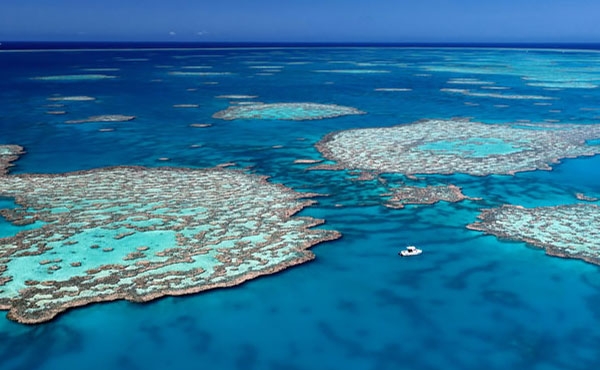Studies used in this Outlook Report vary in the spatial scales they cover. While only one grade is given for the Region, information available about a component (for example, seagrasses) may differ on a regional scale. The report attempts to discuss and summarise regional differences in condition and trends — however, there is no standard way of dividing up the Region when interpreting the data.
Where evidence covers larger areas, for ease of reading and comparison, results are summarised into three regional marine areas (or ‘thirds of the Reef’): northern, central and southern (Section 2.3.5). Their boundaries are not precisely defined, but the northern area extends from the tip of Cape York to approximately Port Douglas (which marks the division between the less-developed and developed catchments adjacent to the Region). The central area extends from the northern area south to the Whitsundays area. The southern area extends south of the Whitsundays area to the Region’s southern boundary near Baffle Creek (north of Bundaberg). The term ‘southern two thirds of the Region’ is often used to describe the combined central and southern areas.
Great Barrier Reef Marine Park ‘management areas’ are sometimes used to describe the main zoning sections within the Region: Far Northern (or far north), Cairns–Cooktown, Townsville–Whitsunday and Mackay–Capricorn. Within the Catchment and inshore locations, sectors are described by natural resource management regions: Cape York, Wet Tropics, Burdekin, Mackay Whitsunday, Fitzroy and Burnett Mary.
The Region is defined by the Act, whereas the Catchment is managed by multiple jurisdictions and is not specifically defined by Queensland legislation. The Catchment (Figure 1.1) encompasses the 35 river basins flowing into the Region.
Across the Region, the term ‘inshore’ may be applied differently for water quality, biodiversity and ecosystem health components. Inshore areas broadly correspond to enclosed coastal water bodies and open coastal waters adjoining intertidal areas and habitats adjacent to the coast, and inshore from mid-shelf reefs. Areas beyond are generally referred to as ‘offshore’. For coral reefs, the term ‘outer shelf’ refers to reefs along the edge of the continental shelf and ‘mid-shelf’ refers to reefs between inshore areas and the outer shelf.


